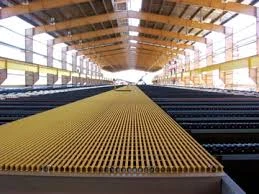
-
 Afrikaans
Afrikaans -
 Albanian
Albanian -
 Amharic
Amharic -
 Arabic
Arabic -
 Armenian
Armenian -
 Azerbaijani
Azerbaijani -
 Basque
Basque -
 Belarusian
Belarusian -
 Bengali
Bengali -
 Bosnian
Bosnian -
 Bulgarian
Bulgarian -
 Catalan
Catalan -
 Cebuano
Cebuano -
 China
China -
 China (Taiwan)
China (Taiwan) -
 Corsican
Corsican -
 Croatian
Croatian -
 Czech
Czech -
 Danish
Danish -
 Dutch
Dutch -
 English
English -
 Esperanto
Esperanto -
 Estonian
Estonian -
 Finnish
Finnish -
 French
French -
 Frisian
Frisian -
 Galician
Galician -
 Georgian
Georgian -
 German
German -
 Greek
Greek -
 Gujarati
Gujarati -
 Haitian Creole
Haitian Creole -
 hausa
hausa -
 hawaiian
hawaiian -
 Hebrew
Hebrew -
 Hindi
Hindi -
 Miao
Miao -
 Hungarian
Hungarian -
 Icelandic
Icelandic -
 igbo
igbo -
 Indonesian
Indonesian -
 irish
irish -
 Italian
Italian -
 Japanese
Japanese -
 Javanese
Javanese -
 Kannada
Kannada -
 kazakh
kazakh -
 Khmer
Khmer -
 Rwandese
Rwandese -
 Korean
Korean -
 Kurdish
Kurdish -
 Kyrgyz
Kyrgyz -
 Lao
Lao -
 Latin
Latin -
 Latvian
Latvian -
 Lithuanian
Lithuanian -
 Luxembourgish
Luxembourgish -
 Macedonian
Macedonian -
 Malgashi
Malgashi -
 Malay
Malay -
 Malayalam
Malayalam -
 Maltese
Maltese -
 Maori
Maori -
 Marathi
Marathi -
 Mongolian
Mongolian -
 Myanmar
Myanmar -
 Nepali
Nepali -
 Norwegian
Norwegian -
 Norwegian
Norwegian -
 Occitan
Occitan -
 Pashto
Pashto -
 Persian
Persian -
 Polish
Polish -
 Portuguese
Portuguese -
 Punjabi
Punjabi -
 Romanian
Romanian -
 Russian
Russian -
 Samoan
Samoan -
 Scottish Gaelic
Scottish Gaelic -
 Serbian
Serbian -
 Sesotho
Sesotho -
 Shona
Shona -
 Sindhi
Sindhi -
 Sinhala
Sinhala -
 Slovak
Slovak -
 Slovenian
Slovenian -
 Somali
Somali -
 Spanish
Spanish -
 Sundanese
Sundanese -
 Swahili
Swahili -
 Swedish
Swedish -
 Tagalog
Tagalog -
 Tajik
Tajik -
 Tamil
Tamil -
 Tatar
Tatar -
 Telugu
Telugu -
 Thai
Thai -
 Turkish
Turkish -
 Turkmen
Turkmen -
 Ukrainian
Ukrainian -
 Urdu
Urdu -
 Uighur
Uighur -
 Uzbek
Uzbek -
 Vietnamese
Vietnamese -
 Welsh
Welsh -
 Bantu
Bantu -
 Yiddish
Yiddish -
 Yoruba
Yoruba -
 Zulu
Zulu
FGD Scrubber Technology for Enhanced Pollution Control and Sustainability Solutions
Understanding FGD Scrubbers A Key Technology for Environmental Protection
Flue Gas Desulfurization (FGD) scrubbers are crucial components in modern power plants and industrial facilities, designed to reduce harmful emissions of sulfur dioxide (SO2). As countries around the globe intensify efforts to combat air pollution and comply with stricter environmental regulations, FGD technology has become increasingly paramount.
Understanding FGD Scrubbers A Key Technology for Environmental Protection
The significance of FGD scrubbers cannot be overstated. They play a vital role in safeguarding environmental and public health. High concentrations of sulfur dioxide can lead to respiratory problems, contribute to acid rain, and harm ecosystems. By effectively reducing these emissions, FGD scrubbers help to mitigate these negative impacts, promoting cleaner air and a healthier population.
fgd scrubber

Moreover, with the increasing global emphasis on sustainable development, FGD systems contribute to the responsible use of resources. The byproducts generated through the FGD process, primarily gypsum, can be repurposed as a key ingredient in the production of wallboard and cement, thus minimizing waste and supporting circular economy initiatives.
Financially, while the initial investment in FGD technology can be substantial, the long-term benefits often outweigh the costs. Facilities equipped with FGD scrubbers can avoid hefty fines associated with non-compliance with environmental regulations. Additionally, companies can enhance their reputation by demonstrating commitment to sustainable practices, which is increasingly important to consumers and stakeholders.
Despite their advantages, FGD systems also face challenges. Maintenance and operational costs can be high, and the disposal of sludge generated in the scrubbing process is a concern that requires careful management. Furthermore, as technology advances, there is a constant need for innovation to improve efficiency and reduce costs.
In conclusion, FGD scrubbers represent a critical technology in the fight against air pollution. Their ability to remove sulfur dioxide from flue gases not only helps to protect the environment but also fosters sustainable business practices. As we move toward a greener future, the role of FGD systems will likely expand, paving the way for new advancements and improved efficiencies in emission control technologies. This technology stands as a testament to our ongoing commitment to environmental stewardship and public health.
Latest news
-
Exploring the Benefits of Top Hammer Drifter Rods for Enhanced Drilling PerformanceNewsJun.10,2025
-
High-Precision Fiberglass Winding Machine for GRP/FRP Pipe Production – Reliable & Efficient SolutionsNewsJun.10,2025
-
FRP Pipes & Fittings for Shipbuilding - Corrosion-Resistant & LightweightNewsJun.09,2025
-
Premium FRP Flooring Solutions Durable & Slip-ResistantNewsJun.09,2025
-
Premium Fiberglass Rectangular Tanks Durable & Lightweight SolutionNewsJun.09,2025
-
Tapered Drill String Design Guide Durable Performance & UsesNewsJun.09,2025









